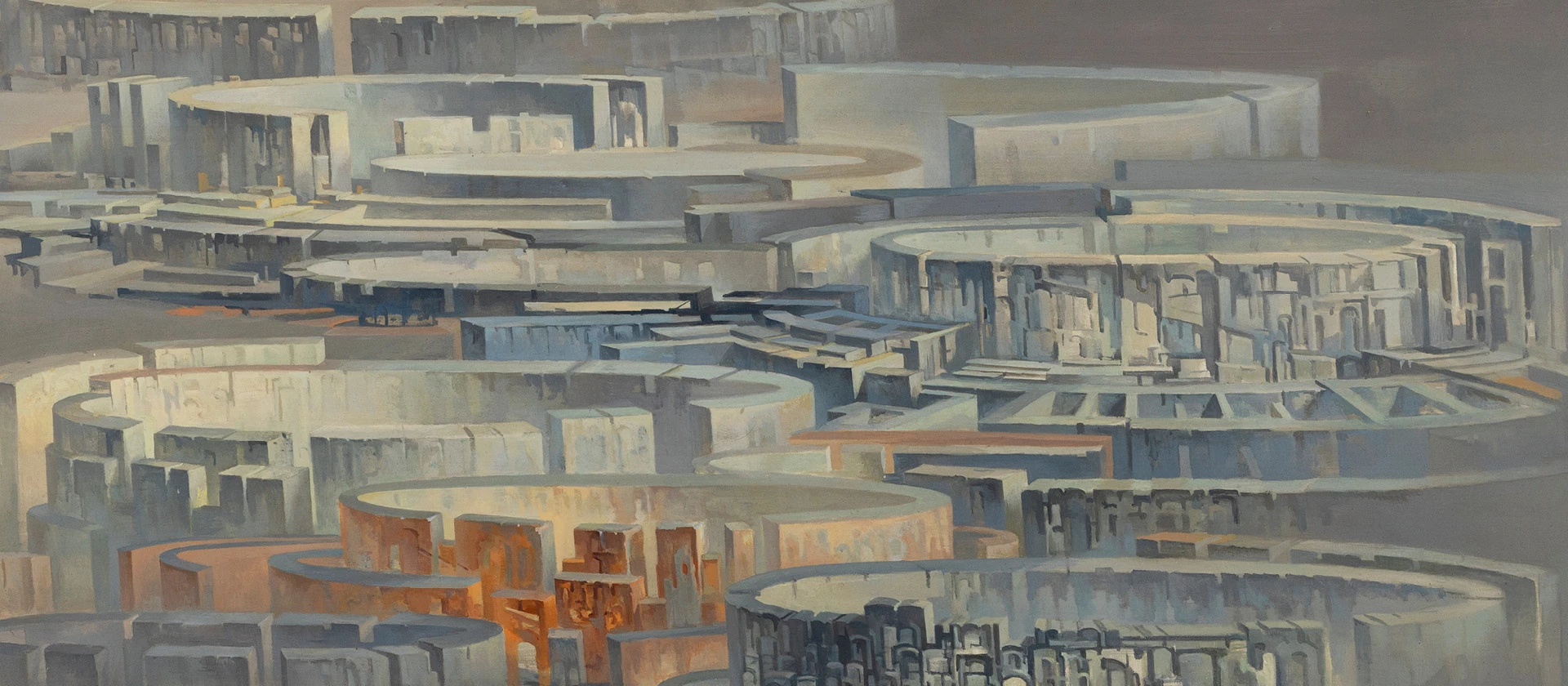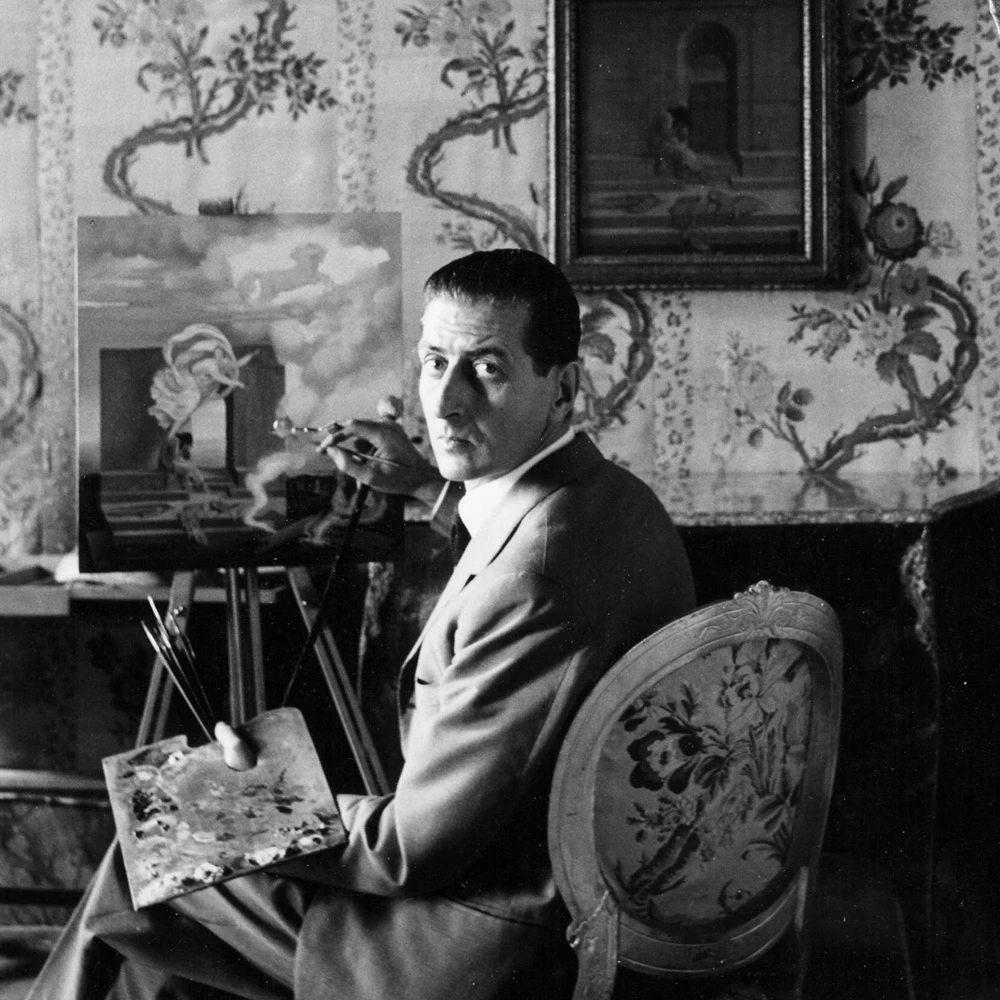Fabrizio Clerici was born in Milan on 15 May 1913. In 1920, he moved with his family to Rome, where he graduated in architecture in 1937. In Rome, he became acquainted with the artistic and intellectual environment and became particularly close to Alberto Savinio.
At the end of the 1930s, he was back in Milan as an architect and illustrator, where he held his first personal exhibition in 1943. In 1944, he returned to Rome where he met Leonor Fini and Stanislao Lepri and began to frequent artists, readers and gallery owners such as Alberto Moravia, Elsa Morante, Irene Brin and Gaspero Del Corso, Mario Praz, Alberto Savinio and his brother Giorgio de Chirico. In 1945 he took part in two important group exhibitions: in Rome at the La Margherita bookshop-gallery (with Leonor Fini and Alberto Savinio) and in New York at the Julien Levy Gallery (with Giuseppe Viviani).
Also from these years are the first publications of books illustrated by the artist, such as Bestiario by Leoncillo Leonardi and Il fu Mattia Pascal by Luigi Pirandello. In 1947, he made his debut as a set designer in George Bernard Shaw's La professione della signora Warren, thus beginning a prolific activity in the fields of theatre, ballet, and opera. The following year he took part in the Venice Biennale for the first time, where he met Salvador Dalí and created the sets and costumes for Igor Stravinsky's Orpheus, staged at La Fenice theatre.
In 1953, the artist went on a series of journeys to the Middle East, Egypt, Syria, Jordan, Libya, Cyrenaica, and Turkey, bringing back to his art two important themes: that of the Mirages and the Temples of the egg, cycles of utopian constructions in the deserts, which develop in a spiral starting from a central core where a hypothetical primeval egg is located. In 1955, he exhibited most of the paintings executed in those years in New York. At the same time as painting, he continued to work as a set designer in the theatre, also collaborating with Giorgio Strehler. The Minotaur publicly accuses his mother of 1952, The Roman Sleep, 1955, The Palermo Confessions of 1954 and Minerva phlegraea of 1956-1957.
Clerici has won national and international recognition for his work and has been exhibited at the MoMa, the Guggenheim Museum in New York, the Centre Pompidou in Paris, the Pushkin Museum in Moscow, the Vatican Museums and in prestigious private and public collections.

